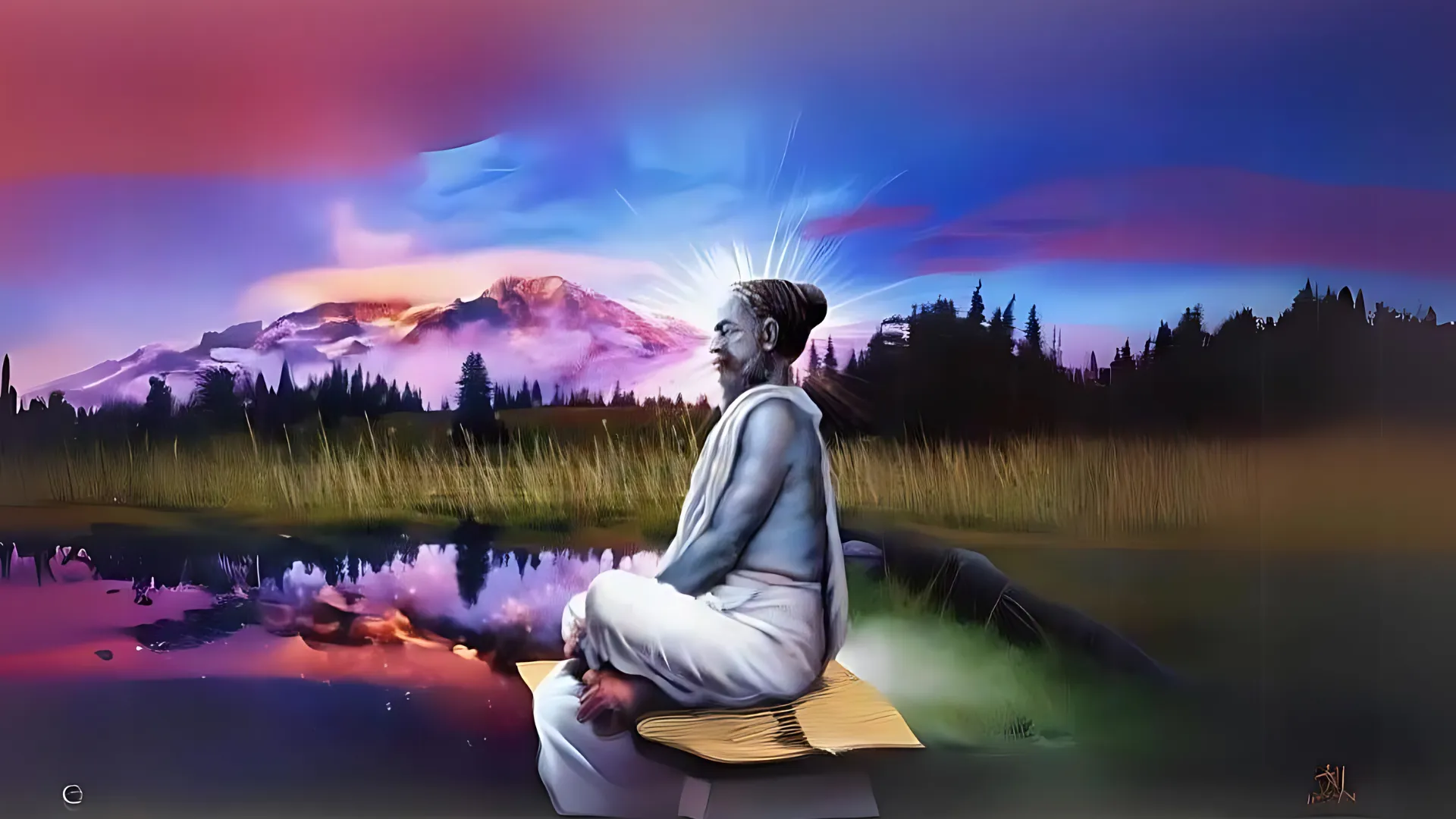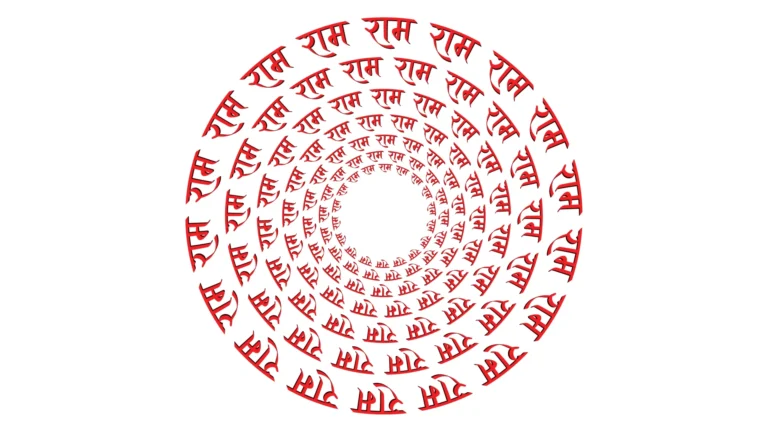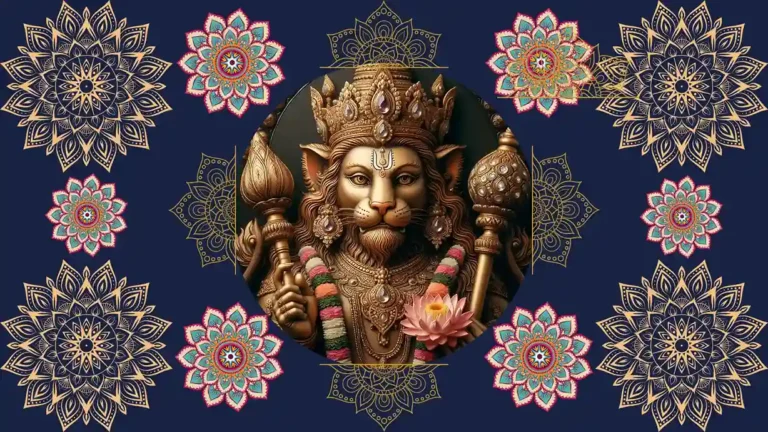Please Like the Blog and Share it for Maximum Reach
Table of Contents
What are Vedas and Upanishads?
Sound is the basis of existence. In ancient India, sacred knowledge wasn’t written first. It was breathed, heard, memorized, and passed down , generation after generation. The Vedas were born through this oral tradition, long beforeit was written and passed on. There are four main Vedas: Rigveda, Yajurveda, Samaveda, and Atharvaveda.
Each Veda is multi-layered. The Samhitas hold hymns that sing to the natural forces and deities. The Brahmanas have delineated rituals and their significance. Aranyakas pull the mind toward reflection, inward thought. And finally, the Upanishads resonate with a deeper undercurrent, that highlight the underlying mechanics of life and beyond.
Unlike earlier parts of the Vedas, the Upanishads do not guide outward activity. They raise questions instead. Who am I, really? What is the unchanging amidst all that moves? What dies, and what doesn’t? These teachings are also known as Vedanta , meaning the end or culmination of the Vedas. It is not just the final section, but the summit of all knowledge.
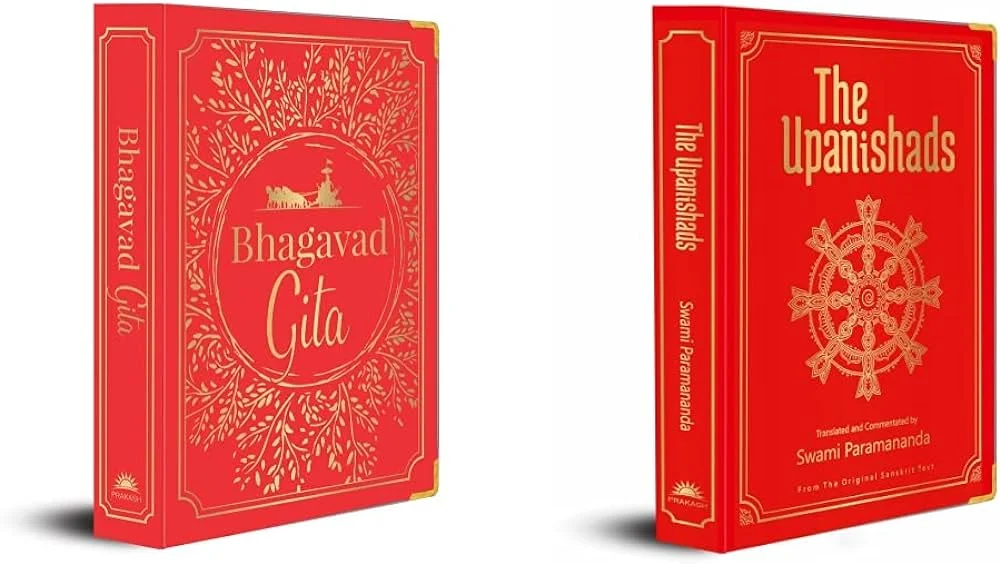
The Upanishads speak of Brahman , boundless, formless, timeless. They also point to the Atman , the individual self that observes, remembers and seeks. Atman is the individualised self of the Supreme, Brahman. And then the conclusion: Atman is Brahman. The seeker and the sought are the same. This understanding is not just a belief to hold, but an experience to be lived , to be realized through inquiry, stillness, and a sincere inner journey.
That idea can feel too abstract, which is why the Bhagavad Gita becomes all the more important. It brings these teachings into dialogue, into a deep exchange of questions and tries to point towards the question of existence itself, finally culminating in the highest Dharma, our real nature. The Gita is set in the heart of a battlefield. A metaphor often used: the Upanishads are a sacred cow, the Gita is the milk, Krishna is the one who draws it, and Arjuna is the one who receives it. The Gita helps us taste what the Upanishads silently offer. It provides a bridge , from quiet contemplation to active life.
Then there’s the Brahma Sutra , short, powerful phrases that attempt to tie everything together. But these aren’t easy to grasp on their own. There are huge Interpretation differences. So, over time, great teachers wrote commentaries. From those, different schools of Vedanta were born.
What Is Vedanta Philosophy and Why It Still Matters
Vedanta is not a single doctrine, but a way of looking deeply into life, asking what lies beneath change, suffering, and identity. The word itself means “the end of the Vedas,” referring both to the final sections of the Vedas and the ultimate essence of their teachings. At its heart, Vedanta is a search for what is real — not in theory, but in direct experience.In my personal opinion, it is more than experience, it is realization, a verification handbook, not to be learnt or memorized, but to be ratified when one reaches the pinnacle of consciousness.
It teaches that beyond body, beyond thought, there is a self — the Atman — and that this Atman is not separate from the ultimate reality, called Brahman. This realization is not just mystical poetry. It’s the living phenomenon, that is universal. It is the same for everone, the only problem is most have not come close to realizing it. Whether through deep reflection, loving surrender, or devoted action, Vedanta calls each person inward, toward truth.
So why does Vedanta still matter today?
Because modern life may have changed in form, but not in struggle, we still wrestle with questions of meaning, identity, fear, and longing. We still search — often outside — for what can only be settled within. Vedanta doesn’t offer escape. It offers clarity. It offers the solution diretly on one’s face. It says confront and know. It does not demand belief. It invites exploration.
In a time of noise, it leads us through allegories into calm and then silence. In a world driven by consumption, it whispers that fulfillment does not come from having more, but from being fully present to what is already whole inside.
Whether we are seekers of knowledge or faith, whether drawn to Advaita’s unity or Bhakti’s devotion, Vedanta opens a path — timeless, spacious, and deeply human. In fact unless one becomes a practical student of the Gita and the Vedanta, he is still far away from attaining one’s human nature. When this is the case, attaining divinity becomes a tall ask.
Emergence of Different Schools of Vedanta Philosophy
Three texts , the Upanishads, the Gita, and the Brahma Sutra , are considered central by all Vedanta schools. But reading is one thing. Understanding is another. Each school saw something slightly different in the same verses. These differences were never contradictions. People saw those as contradictions because they wore different glasses and so them from skewed lenses, skewed opinions and skewed points of view. Sometimes they are just layers, that need to be further explored, thats all. Sometimes they may give entirely new insights. But all of them aimed at one thing , freedom from ignorance and a return to the source.
Advaita Vedanta: The Path of Non-Dual Wisdom
Advaita means non-dual. Not two. A vision where everything , self, world, God , is one. Sri Adi Shankaracharya shaped this school and took it towards consummation. He taught that the only ultimate reality is Brahman. Everything else , all name, all form , is temporary, changing, illusory.
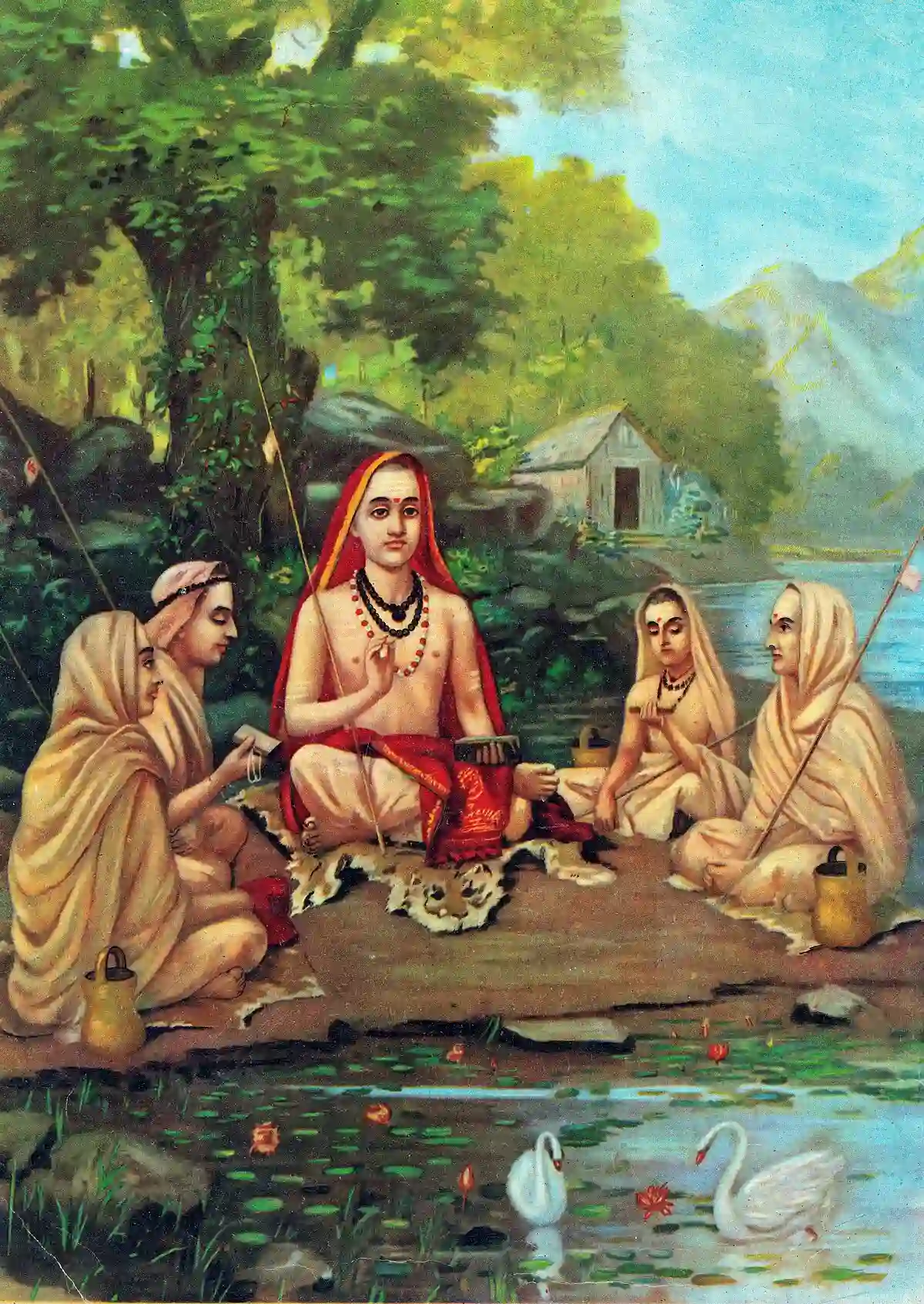
According to Advaita, the soul is not different from Brahman. It only seems that way due to ignorance. When that ignorance drops, unity is seen. You don’t become Brahman , you realize you always were. This path values discernment (viveka), detachment (vairagya), and deep meditation on the self. For those who walk the Advaita path, knowledge alone , not action or ritual , is considered the means to liberation.
Difference in Advaita and other Duality Schools
Not everyone saw it that way. Later thinkers said, yes, unity is beautiful , but difference is real too. They argued that God, soul, and world are all true at the same time. And while connected, they are not the same. These traditions leaned toward devotion, not just realization.
They spoke of Maya, the power that veils. Of Jeeva , the individual soul. And of Bhagawan , the Supreme Being. In these schools, Bhakti, or loving devotion, became the doorway to truth. The soul’s surrender, not its self-realization, became the mark of spiritual maturity. And thus arose alternative Vedantic streams that were both rigorous and intimate.
Vishistadvaita
Sri Ramanujacharya gave voice to Vishishtadvaita , a philosophy of qualified non-dualism. God is Narayana, filled with compassion, qualities, and form. The soul is not illusion. It is real. It is a part of God, not the whole.
Liberation here is not about merging. It’s about loving surrender. The soul doesn’t lose itself , it finds its place in God. Ramanuja’s writings, especially Sri Bhashya, explain this path with great care. This school emphasizes that while Brahman is one, He has internal distinctions , the souls and the universe are His body. Through surrender and devotion (prapatti), the soul reaches its highest potential.
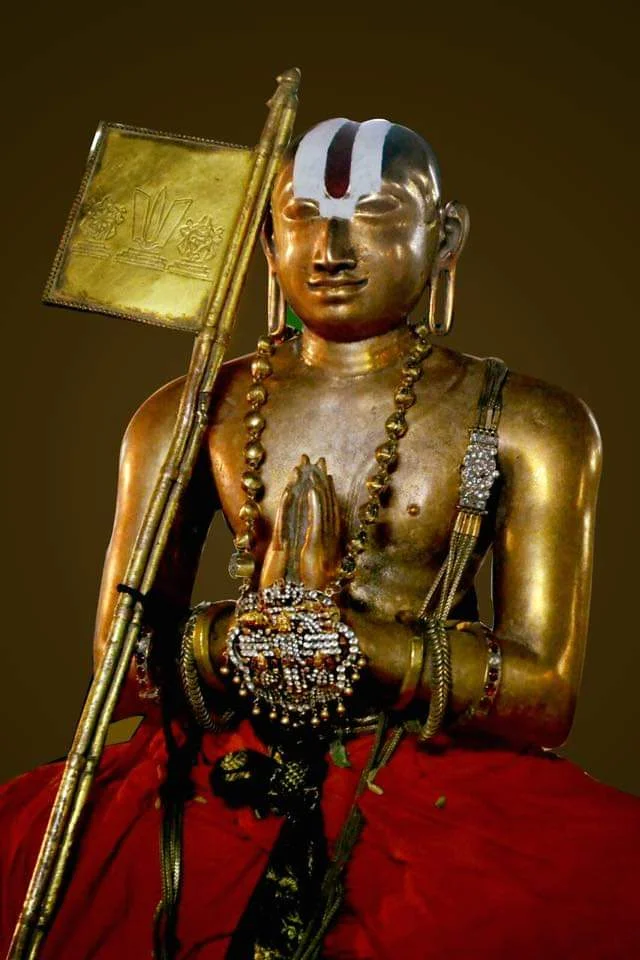
Dvaita Vedanta: The Dualist Approach to God
Sri Madhvacharya went further, declaring that soul and God are forever separate. This is Dvaita , dualism. In his teachings, the soul always depends on God. Maha Vishnu is complete, unchanging, and supreme. We are His servants, eternally.
Madhva laid out five kinds of difference: between soul and God, between souls, between soul and matter, God and matter, and one piece of matter and another. These are not errors of perception. They are reality.

The path here is devotion rooted in humility. We do not try to become God, because one never can. We try to serve Him with love. In Dvaita, surrender is not a dissolving into Brahman , it is a reverent bow to Bhagavan who always stands apart, glorious and accessible.
The Material Universe: Understanding Prakriti
What is this world made of? In Vedanta, it’s not just physical stuff. It’s Prakriti , the principle of nature. Subtle, layered, and governed by cause and effect.
Everything we do , every thought, every desire , plants a seed. That seed becomes karma. Karma unfolds into experiences. It doesn’t punish or reward. It simply moves. Our joys, our sorrows, our births , all flow from these earlier steps.

The soul is carried forward, life after life, until something deeper awakens. Until we see through the pattern. Until we begin to question our likes, dislikes, fears, and attachments.
The Jivatma and the Subtle Body: A Deeper Look
The soul doesn’t travel alone. It carries memories, habits, emotions , subtle forms shaped by experience. This is the jivatma , the travelling self.
That’s why certain fears stay with us. Certain patterns repeat. They’re not accidents. They’re residues. Until they’re resolved, the journey continues. And this isn’t just a Vedantic idea. Jainism, Buddhism, and Sikhism also echo this , that the soul’s story stretches far beyond one lifetime.
This subtle body forms the bridge between one life and another. It binds through impressions, or samskaras. These impressions become tendencies , vasanas , that guide how we react, speak, and even what we desire. When purified through wisdom or devotion, the jivatma becomes lighter and freer.
Shuddha-Advaita Vedanta and Dwaita-Advaita Vedanta
Sri Vallabhacharya gave us Shuddha Advaita , pure non-dualism, but with a twist. For him, the world isn’t illusion. It’s real. And it’s divine. Everything is Krishna’s joyful play.
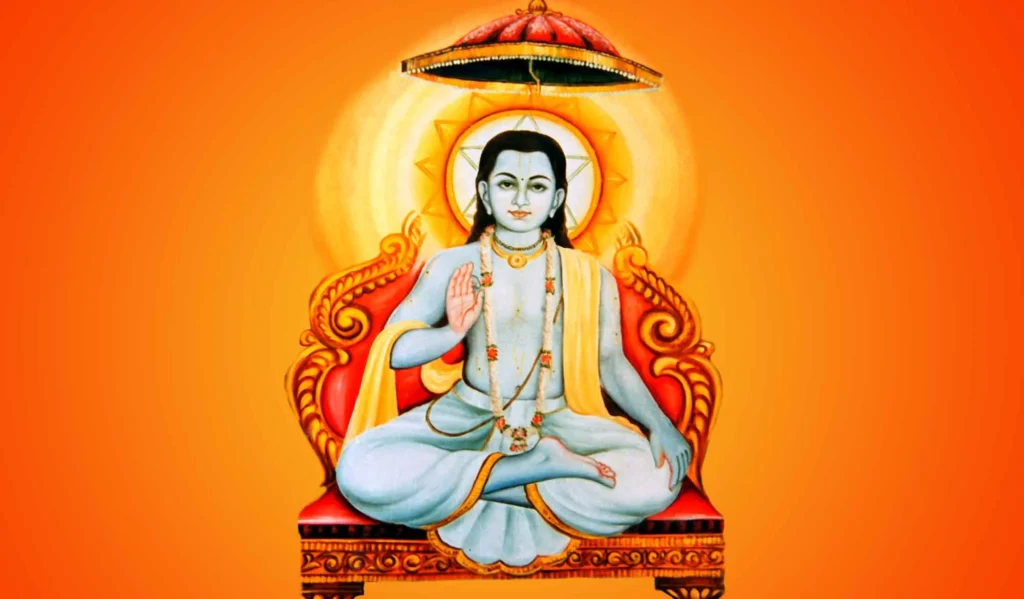
His work, the Anu Bhashya, paints a universe that doesn’t need to be escaped , only loved. In this vision, even the ordinary is sacred. He emphasized seva, or loving service, to the Lord, not out of obligation but out of pure affection.
Sri Nimbarkacharya taught Dvaita-Advaita. Two and not-two. The soul is different from God, yet not fully separate. It’s a paradox, but a gentle one. Something to be lived, not solved. His Vedanta Parijata Bhashya stands as a unique blend of intellect and sweetness.
Acintya-Bhed-Abhed
Chaitanya Mahaprabhu gave us another path , Acintya-Bheda-Abheda. It means “inconceivable oneness and difference.”
He didn’t teach it in dry words. He sang, danced and wept. For him, Krishna was everything , the source, the path, the friend. And the soul was both His part and His beloved.
His follower, Sri Baladeva Vidyabhushan, brought this to text through the Govinda Bhashya. But the truth it holds lives more in the heart than in books. It is felt when the soul cries out in longing and sings in surrender.
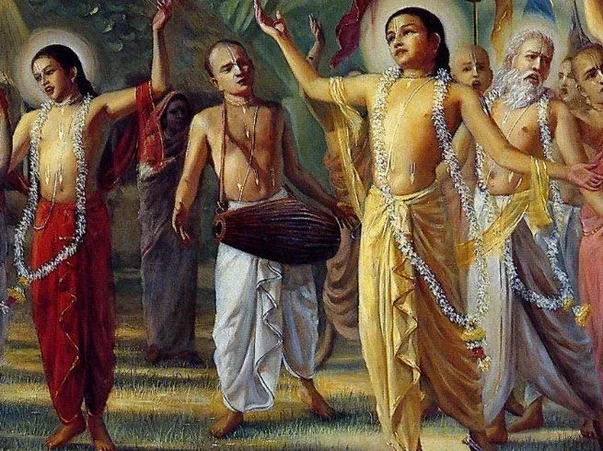
Why the Upanishads Still Matter
In today’s complex, distracted world, the Upanishads offer something rare: silence and clarity. Their relevance has only deepened. When external achievements don’t bring lasting peace, when busyness crowds out meaning, the quiet voice of the Upanishads waits. They don’t promise comfort. They invite awakening.
For a modern seeker juggling career, family, and self-doubt, these ancient teachings whisper that your value lies not in what you achieve, but in what you are already. The message is not outdated. It’s essentially relevant even today. In a society driven by consumption and noise, the idea that fulfillment lies not in accumulation but in realization is revolutionary.
That’s why the Upanishads remain timeless. They aren’t manuals. They’re mirrors , polished by thousands of years of reflection. And in those mirrors, we don’t just glimpse ancient sages. We begin to see ourselves.
Conclusion: Where the Questions Lead
The Vedas begin with sound. The Upanishads end with stillness. In between, seekers walk, wonder, fall, and rise. They stumble upon verses and mantras, only to discover that what they were chasing all along is already within them.
Some teachings say all is one. Others say difference is eternal. Some point inward. Others point upward. But all of them ask us to look , not just outside, but inside. The beauty of Vedanta is that it doesn’t shut the door with final answers. It leaves the door open with sacred questions.
Inner Realization and Outer Practice
Whether we follow the path of Advaita’s pure oneness, Vishishtadvaita’s intimate surrender, or Dvaita’s dualistic devotion , the transformation is inward. Every school of Vedanta ultimately turns the mirror toward the self. Not in isolation, but in relationship , with God, the world, and our karmic imprints.
Practice may vary: some emphasize meditation and self-inquiry; others worship and service. But the essence of each tradition lies in softening the ego, transcending identification with the body and mind, and aligning with something greater , either within or beyond.
Returning to the Self
No matter which Vedantic school you explore, you will find yourself circling back to one question:
Who am I, really?
And perhaps, in that question, everything begins. The outer world may keep changing, but the invitation of Vedanta remains the same , to pause, to reflect, and to uncover the truth behind the many masks we wear. Because in seeking the Self, we end up discovering all.

The Vedas begin with sound. The Upanishads end with stillness. In between, seekers walk, wonder, fall, and rise.
Some teachings say all is one. Others say difference is eternal. Some point inward. Others point upward. But all of them ask us to look , not just outside, but inside.
FAQs
Q1: Are the Vedas and the Upanishads the same thing?
Not really. They’re part of the same tradition, but they do different things. The Vedas have a lot , mantras, hymns, rituals. Things people did in daily and sacred life. The Upanishads came later. They turn inward. Less about ceremony, more about asking , who are we? What’s behind all this? You could say the Upanishads are like the quiet questions that come after everything else.
Q2: What are the Upanishads trying to say?
It’s not something you sum up quickly. They don’t just give answers , they make you pause. Over and over, they bring you to the idea that the self deep inside, the Atman, isn’t different from the highest truth, called Brahman. But it’s not a concept to memorize. It’s something you slowly come to see for yourself.
Q3: How are Advaita and Dvaita different?
They look at the soul and God in two very different ways. Advaita says they’re not separate. You just think they are, and that’s the problem. Dvaita says they’ve always been different, and that’s beautiful in its own way. In one, you realize there’s only one. In the other, you build a relationship with the Divine that stays personal, forever.
Q4: Do the Upanishads talk about karma and rebirth?
Yes, but not always directly. They suggest that actions leave traces , karma , and those traces keep the soul moving. Birth after birth. Until, one day, the soul sees clearly and steps out of the cycle. It’s not punishment. It’s more like a loop that keeps repeating until you wake up from it.
Q5: Are rituals necessary in Vedanta?
Sometimes yes. It depends on the school. For those who follow Advaita, rituals might help in the beginning, but they’re not the end goal. In Bhakti-based paths like Dvaita or Vishishtadvaita, rituals and devotion go hand in hand. They become ways to express love, not just duty.
Q6: How do I know which Vedanta path is for me?
You listen. Not just to the teachings , but to yourself. Some people are drawn to silence and inward reflection. Others feel moved by love and devotion. There’s no one-size-fits-all. The path that helps you walk more honestly, more fully, more humbly , that’s probably the one meant for you. But above all it is best to have a Guru. Prayer to get a God Realized Guru from Bhagawan or Nature is vital, if we are serious in knowing our path.
Please Like the Blog and Share it for Maximum Reach

